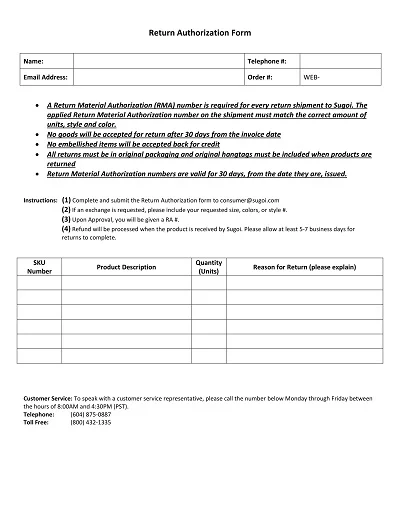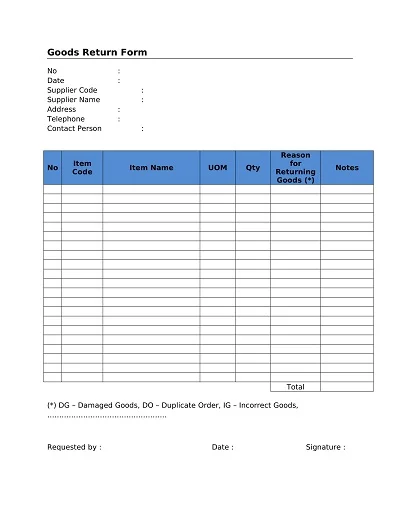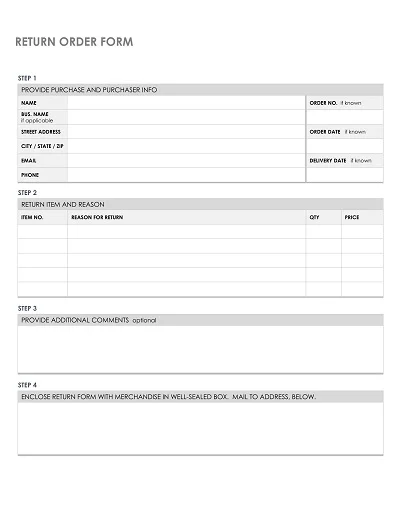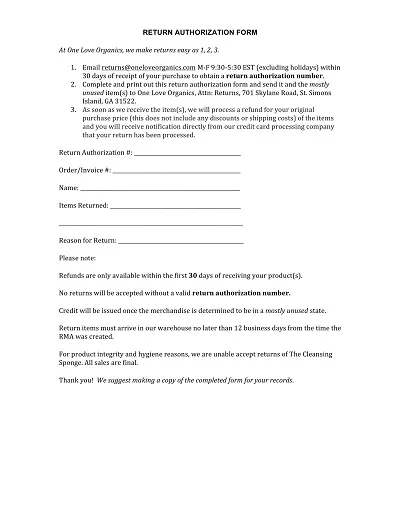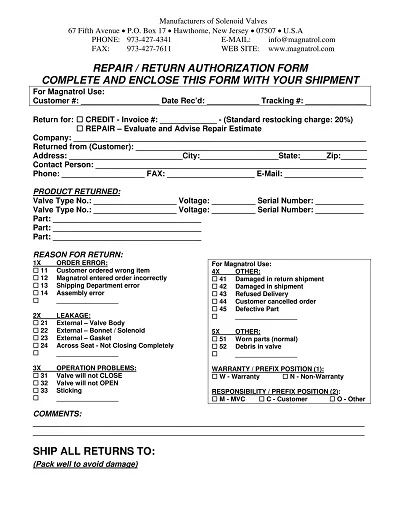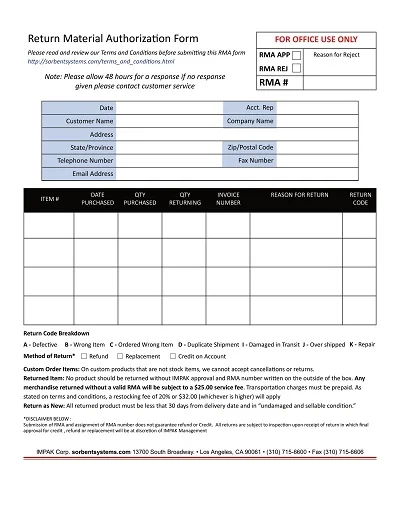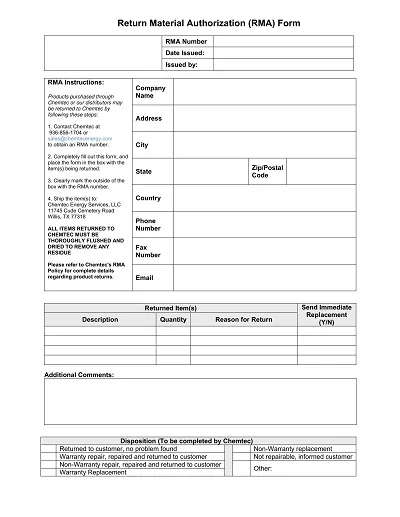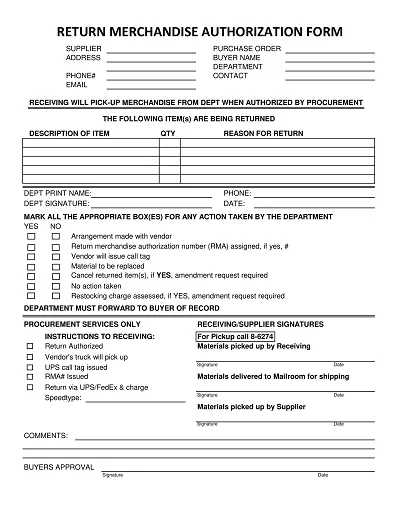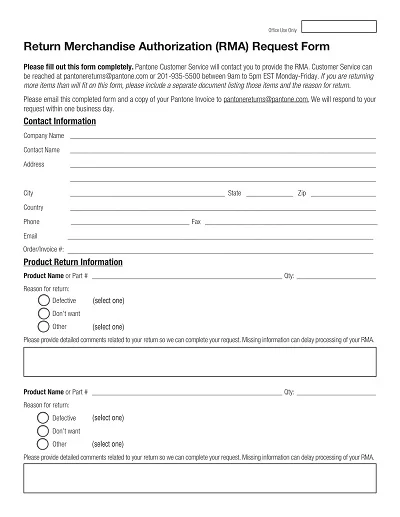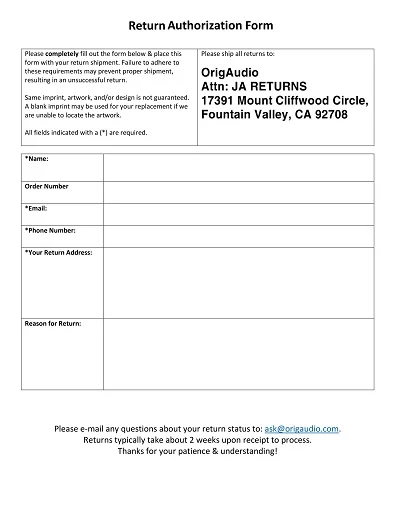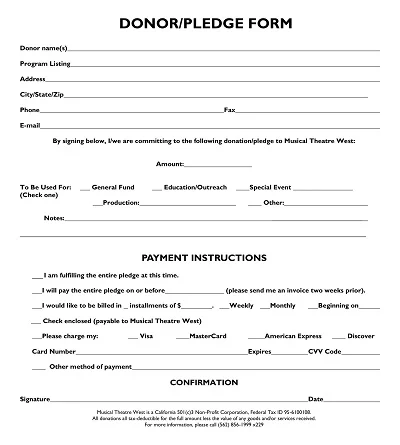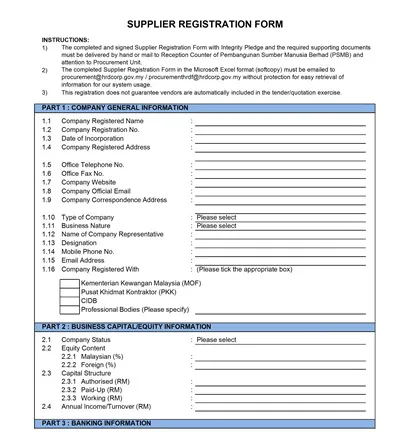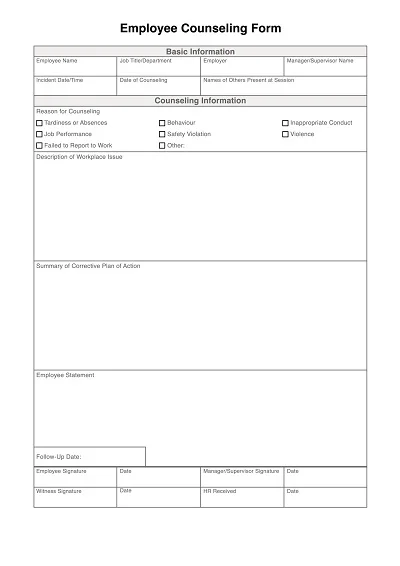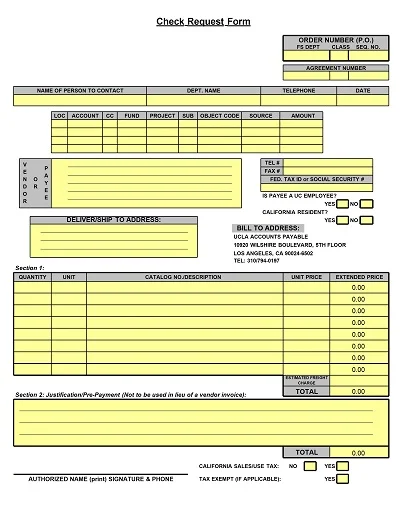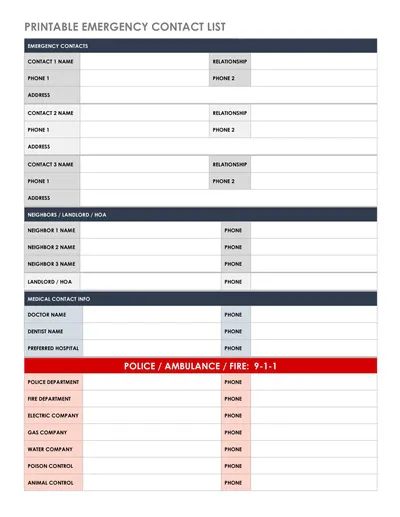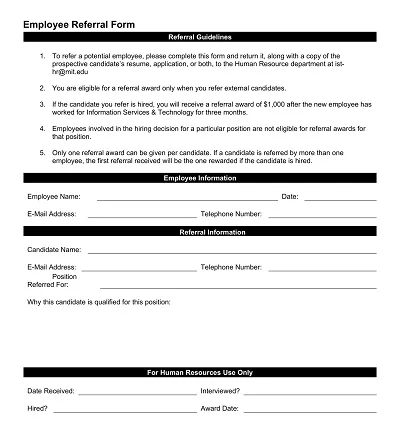A Return Merchandise Authorization form template is a format that follows the standard format whereby a business prepares the document and avails it to such customers who want to return products they have purchased. It provides basic data from the customer for identification, such as product description, why the product is being returned, and customer information.
This reduces the chances of returning with ambiguous information about the products and descriptions of how it was used by the manufacturer. It also enables the business and the customer to keep records of the transactions and returns process, which could help prevent misunderstandings with the returns process and follow-up steps.
Download Free Return Merchandise Form Templates
What is a Return Merchandise Form?
A return merchandise authorization form is a letter that a retailer or manufacturer provides a customer as a permission note to return a particular merchandise for repair, replacement, or refund.
These could include the name and description of the item, the grounds for the return, and where and how the product should be returned. It makes returns management formal and proper and ensures customer concerns are addressed effectively.
Purpose of a Return Merchandise Form
These are some primary Purposes of a Return Merchandise Forms:
Streamlining Returns and Exchanges
RMA form is needed to maintain an efficient return and exchange system for the customers and the companies. It provides a systematic and more efficient manner of managing products that can be returned, where both parties are specific on the reasons for the return and the exact result that is expected.
Keeping Records
Reporting of return merchandise authorization also ensures that the returned products are documented properly in the inventory and helps study trends on product returns. This data is very essential in helping business organizations to be in a position to gauge their customers so that they can have improved product performance.
Enhancing Customer Service
When done effectively, using RMA forms is an added bonus to the kind of customer service that business organizations offer. Thus, securely and professionally, customers dealing with an RMA form are convinced that their returns or exchanges are safe.
Fraud Prevention
RMA forms act as a measure against enemies of rigor who want to make returns through fake information by stating specific information about the purchase and the return policy. This assists retailers in avoiding fraud cases that may be detrimental to their businesses.
Components of a Return Merchandise Form
When designing a return merchandise authorization (RMA) form, it’s crucial to include several key components to streamline the return process:
- Order Information: It should be possible to input the order, its date, and the product description to help identify the transaction.
- Customer Details: Full name, contact information, and address enshrine that the seller should call the customer to notify them about the return.
- Reason for Return: A checklist with additional options for customers to specify the reasons for the return or a free text field.
- Product Condition: Simple instructions concerning the item’s condition to be returned (for example, unused, used, damaged, etc. ).
- Return Instructions: The information on how and when the item should be returned, along with instructions on how to do it.
- Preferred Outcome: Customers can opt for a refund or credit, exchange, or be asked to choose an option.
- Sign-off Section: A field where the customer is required under the message to affix his/her signature acknowledging the return policies and terms.
All of these help make the cycle of customer and retailer return programs as smooth as possible.
Benefits of using a Return Merchandise Form
Here are some essential benefits of using a Return Merchandise Form:
- Streamlined Return Procedures
- Efficient Processing: RMA forms simplify return processing since it involves completing the required forms in line with the set format of handling them.
- Reduced Errors: Standardization minimizes the likelihood of mistakes even when the returns process is being managed, facilitating better returns management.
- Better Inventory Management
- Real-time Tracking: Returned merchandise can also be supervised adequately, inventory records can be changed, and businesses can clearly understand the rules for restocking the merchandise.
- Product Insight: The overall information collected from the RMA forms might give insights into general patterns of returns across the business and thus may be used to inform the company of possible problems with its products.
- Improved Customer Relations
- Transparent Communication: Lack of confusion eliminates confusion, which is crucial for building optimum trust in the brand, especially if the steps are easy to follow.
- Customer Confidence: A well-managed returns policy calls for consumers to buy the products since they are assured that the return procedures are easy to follow.
Tips for Creating an Effective Return Merchandise Form Template
To optimize your return merchandise form template, consider these fundamental tips:
- Simplicity is Key: Again, design the form so that it does not require extra attention and detail to ensure no confusion or mistakes. To ensure a fast and efficient completion of the process, it is recommended to use brief and pertinent descriptions and indicate only the most necessary fields.
- Define Return Conditions: View 3: State the conditions on which goods can be returned, including the time limit of the return period and the condition of items to be returned. It can also help to alleviate disagreements and misunderstandings because people will know how things work.
- Offer Multiple Return Options: Implement different categories wherein customers can file their returns, including online returns, through email or post. The subsequent paper aims to dissect the option of flexibility in relation to customer satisfaction.
- Include Detailed Instructions: Instead, provide specific instructions to customers on what they must do to effect their return and ensure they follow the correct process.
- Automate Where Possible: Speed up the return process to increase efficiency and minimize errors resulting from manual work. This could be useful in terms of time, making the refund or exchange process faster, which is good for consumers.
- Contact Information: Make sure customers have a way to contact customer service in case they face any problems or have any questions. Accessibility through enshrined communication can ensure positive relations with the outside world.
- Privacy Policy: Analyze the pros and cons of using one’s own experience about what protects customers and what it is better to avoid and provide people with an amenity like a privacy statement stating that the provided data is protected according to the legislation.

